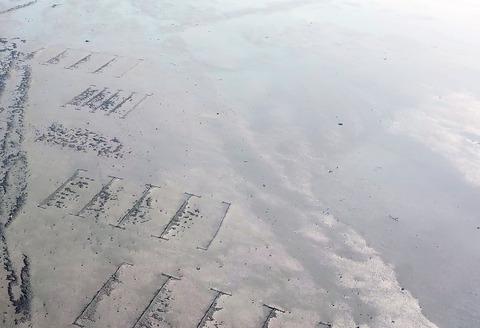当前位置:
X-MOL 学术
›
J. Appl. Ecol.
›
论文详情
Our official English website, www.x-mol.net, welcomes your feedback! (Note: you will need to create a separate account there.)
Promoting self‐facilitating feedback processes in coastal ecosystem engineers to increase restoration success: testing engineering measures
Journal of Applied Ecology ( IF 5.7 ) Pub Date : 2020-08-02 , DOI: 10.1111/1365-2664.13709 Jildou Schotanus 1 , Brenda Walles 2 , Jacob J. Capelle 2 , Jim Belzen 2 , Johan Koppel 3 , Tjeerd J. Bouma 1, 3
Journal of Applied Ecology ( IF 5.7 ) Pub Date : 2020-08-02 , DOI: 10.1111/1365-2664.13709 Jildou Schotanus 1 , Brenda Walles 2 , Jacob J. Capelle 2 , Jim Belzen 2 , Johan Koppel 3 , Tjeerd J. Bouma 1, 3
Affiliation

|
Coastal ecosystem engineers often depend on self‐facilitating feedbacks to ameliorate environmental stress. This makes the restoration of such coastal ecosystem engineers difficult. We question if we can increase transplantation success in highly dynamic coastal areas by engineering measures that promote the development of self‐facilitating feedback processes. Intertidal blue mussels Mytilus edulis are a typical example of ecosystem engineers that are difficult to restore. A lack of self‐facilitating feedbacks at low densities limits establishment success when young mussels are transplanted on dynamic mudflats. In a large field experiment, we investigated the possibility of increasing transplantation success by stimulating the formation of an aggregated spatial configuration in mussels, thereby reducing hydrologically induced dislodgment and the risks of predation. For this, we applied engineering measures in the form of fences that trapped wave dislodged mussels. Mussel loss rates were significantly lower when mussels were placed between both artificial fences, and in high densities (4.2 kg/m2) compared with mussels placed in areas without fences and in low densities (2.1 kg/m2). The fences induced the formation of a banded pattern with high local mussel densities, which locally reduced predation. Synthesis and applications. Our results underline the importance of actively promoting the development of self‐facilitating processes, such as aggregation into patterns, in restoration projects of ecosystem engineers. In particular, the current study shows that engineering measures can help to initiate these kinds of self‐facilitating interactions, especially in highly dynamic areas.
中文翻译:

促进沿海生态系统工程师的自我促进反馈过程以提高恢复成功率:测试工程措施
沿海生态系统工程师通常依靠自我促进的反馈来缓解环境压力。这使得这些沿海生态系统工程师的恢复变得困难。我们质疑是否可以通过促进自我促进反馈过程发展的工程措施来提高高度动态沿海地区的移植成功率。潮间带蓝贻贝 Mytilus edulis 是生态系统工程难以恢复的典型例子。将幼贻贝移植到动态泥滩时,在低密度下缺乏自我促进的反馈限制了建立成功。在一项大型现场实验中,我们研究了通过刺激贻贝中聚集空间结构的形成来提高移植成功率的可能性,从而减少水文引起的移动和捕食的风险。为此,我们应用了围栏形式的工程措施,以捕获波浪驱逐贻贝。与放置在没有围栏和低密度(2.1 kg/m2)区域的贻贝相比,将贻贝放在两个人工围栏之间并以高密度(4.2 kg/m2)放置时,贻贝损失率显着降低。围栏导致形成具有高局部贻贝密度的带状图案,从而在局部减少了捕食。合成与应用。我们的结果强调了在生态系统工程师的恢复项目中积极促进自我促进过程发展的重要性,例如聚合成模式。特别是,
更新日期:2020-08-02
中文翻译:

促进沿海生态系统工程师的自我促进反馈过程以提高恢复成功率:测试工程措施
沿海生态系统工程师通常依靠自我促进的反馈来缓解环境压力。这使得这些沿海生态系统工程师的恢复变得困难。我们质疑是否可以通过促进自我促进反馈过程发展的工程措施来提高高度动态沿海地区的移植成功率。潮间带蓝贻贝 Mytilus edulis 是生态系统工程难以恢复的典型例子。将幼贻贝移植到动态泥滩时,在低密度下缺乏自我促进的反馈限制了建立成功。在一项大型现场实验中,我们研究了通过刺激贻贝中聚集空间结构的形成来提高移植成功率的可能性,从而减少水文引起的移动和捕食的风险。为此,我们应用了围栏形式的工程措施,以捕获波浪驱逐贻贝。与放置在没有围栏和低密度(2.1 kg/m2)区域的贻贝相比,将贻贝放在两个人工围栏之间并以高密度(4.2 kg/m2)放置时,贻贝损失率显着降低。围栏导致形成具有高局部贻贝密度的带状图案,从而在局部减少了捕食。合成与应用。我们的结果强调了在生态系统工程师的恢复项目中积极促进自我促进过程发展的重要性,例如聚合成模式。特别是,



























 京公网安备 11010802027423号
京公网安备 11010802027423号